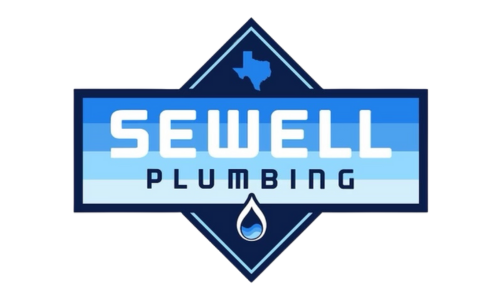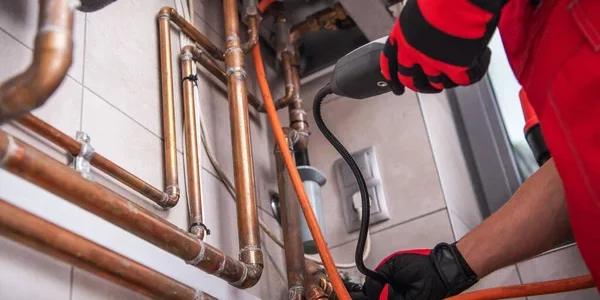Leak location is a topic that often goes overlooked until the consequences of undetected leaks become apparent. Whether it’s a subtle drip from a pipe, a hidden roof leak, or an underground issue, the ability to pinpoint and address leaks promptly is crucial for maintaining the integrity of our homes and businesses. In this comprehensive guide, we’ll explore the various types of leaks, delve into DIY leak detection techniques, discuss advanced technologies, and emphasize the importance of professional leak detection services.
Understanding Leak Location
Defining Leak Location
Leak location, in its essence, refers to the process of identifying and pinpointing the source of leaks in a structure. From plumbing leaks within the walls to elusive roof leaks and hidden underground issues, leak location plays a pivotal role in preventing potential damage. Recognizing the signs of leaks is the first step toward effective leak location, ensuring that water-related issues are nipped in the bud.
Consequences of Undetected Leaks
Undetected leaks can wreak havoc on both residential and commercial properties. From compromising structural integrity to causing a surge in water bills, the consequences of ignoring leaks can be severe. Moreover, undetected leaks can pose health risks, promoting the growth of mold and mildew. Acknowledging the potential dangers underscores the importance of prioritizing leak location in property maintenance.
The Role of Leak Detection in Property Maintenance
Leak location is a proactive approach to property maintenance. Regularly identifying and addressing leaks contributes to the overall health of a property. From the plumbing infrastructure to the roof and the often-overlooked underground components, understanding the vulnerable areas is essential for a comprehensive approach to maintenance.
Types of Leaks
Plumbing Leaks
Plumbing leaks are among the most common and, unfortunately, often the trickiest to detect. Recognizing signs such as water stains on walls, ceilings, or flooring is crucial. DIY methods, including visual inspections and monitoring water meter readings, can offer preliminary insights into potential plumbing leaks.
Roof Leaks
Roof leaks can be deceptive, with symptoms often manifesting far from the actual point of entry. Identifying signs like water spots on ceilings, dampness in the attic, or discolored patches on walls can help initiate the process of leak location. Regular roof inspections and maintenance are key to preventing and addressing roof leaks.
Underground Leaks
Detecting underground leaks presents a unique set of challenges. Issues may arise in water supply lines or sewer pipes buried beneath the ground. Technologies such as ground-penetrating radar (GPR) and professional services become essential for accurate leak location in these scenarios.
Advanced Leak Detection Technologies
Acoustic Leak Detection
Acoustic leak detection utilizes sound waves to identify leaks in plumbing systems. Specialized equipment detects the unique sounds produced by water escaping from pipes. While it offers high precision, it may have limitations in certain environments, such as noisy surroundings.
Infrared Thermography
Infrared thermography involves using thermal imaging cameras to detect temperature variations associated with water leaks. It’s effective in identifying hidden leaks behind walls or in ceilings. However, its accuracy can be influenced by factors like insulation and external temperature.
Ground Penetrating Radar (GPR)
GPR is a non-invasive technology used to locate underground leaks. It sends radar pulses into the ground and detects reflections, allowing professionals to map the subsurface and identify potential issues. This method is particularly useful for complex underground leak scenarios.
Benefits of Professional Leak Detection
Accuracy and Precision
Professional leak detection services offer unparalleled accuracy and precision. Specialized tools and equipment enable professionals to pinpoint the exact location of leaks, minimizing the need for invasive exploratory work.
Cost-Effectiveness in the Long Run
While DIY methods may seem cost-effective initially, professional leak detection can save money in the long run. Prompt and accurate detection reduces the risk of extensive damage, preventing costly repairs and property restoration.
Comprehensive Solutions for Different Leaks
Professionals are equipped to handle various types of leaks, from plumbing issues to roof leaks and underground problems. Their expertise ensures that each unique leak scenario is addressed comprehensively, minimizing the risk of recurring issues.
Choosing the Right Leak Detection Service
Factors to Consider
When selecting a leak detection service, consider factors such as reputation, customer reviews, licensing, and certifications. Reputable companies with a history of successful leak detection are more likely to provide reliable services.
Questions to Ask During the Hiring Process
Engage with potential leak detection services by asking about the methods they use, seeking detailed cost estimates, and clarifying the timeline for both detection and repairs. Clear communication ensures a smooth process.
Repairing and Sealing Leaks
Importance of Prompt Repairs
Once leaks are detected, prompt repairs are crucial to prevent further damage. Delaying repairs can lead to more extensive issues, escalating the overall cost of restoration and negatively impacting property value.
Common Materials for Sealing Different Leaks
Understanding the materials used for sealing leaks is essential. Different types of leaks may require specific sealants or repair materials. Professionals use high-quality materials to ensure long-lasting repairs and prevent future issues.
Professional Leak Repair Process
Professional leak repairs follow a systematic process, starting with a thorough assessment of the leak’s source. The repair phase involves targeted solutions, minimizing disruption during the process. Post-repair inspections ensure the quality and effectiveness of the repairs.
Preventive Measures After Leak Location
Regular Maintenance Practices
Incorporating routine maintenance into your property care routine is essential for preventing future leaks. Regular inspections of vulnerable areas, such as plumbing fixtures and roofing, can identify potential issues before they escalate.
Monitoring Water Usage
Installing smart devices for water monitoring provides an additional layer of protection against leaks. Automated alerts for unusual water consumption patterns allow for swift action, minimizing potential damage and water wastage.
Educating Residents and Employees
Raising awareness about leak prevention among residents or employees fosters a culture of responsibility. Providing tips for spotting early signs of leaks empowers individuals to take action, contributing to overall property health.
FAQs
- What are the common signs of a water leak in a home?
Look out for water stains on walls or ceilings, unexplained increases in water bills, musty odors, and the sound of running water when no fixtures are in use.
- How can I check for a leak in my plumbing system?
Perform a water meter test by turning off all water sources and monitoring the meter. Conduct visual inspections for wet spots, mold, or discoloration, and consider using dye tests in toilets and sinks.
- Are there DIY methods for detecting roof leaks?
Yes, inspect your attic for signs of water intrusion, check for water stains on ceilings, and perform a visual inspection of your roof from the ground. Address any damaged or missing shingles promptly.
- What are the challenges of locating underground leaks?
Underground leaks pose challenges due to their hidden nature. The use of ground-penetrating radar (GPR) and acoustic leak detection technologies is often necessary for accurate identification.
- When should I consider hiring a professional leak detection service?
Seek professional assistance for complex leak scenarios, commercial properties, large-scale leaks, or when DIY methods are inconclusive. Professionals have the expertise and tools to handle intricate situations.
- How do professionals locate leaks in plumbing systems?
Professionals use various methods, including acoustic leak detection, infrared thermography, and visual inspections. These techniques allow them to pinpoint the exact location of the leak with high accuracy.
- What is the role of infrared thermography in leak detection?
Infrared thermography uses thermal imaging cameras to detect temperature variations associated with water leaks. It is effective in identifying hidden leaks behind walls or ceilings.
- How can I choose the right leak detection service for my property?
Consider factors such as reputation, customer reviews, licensing, and certifications. Ask questions about the methods they use, request detailed cost estimates, and review case studies from past projects.
- What materials are commonly used for sealing different types of leaks?
Sealants and repair materials vary based on the type of leak. Professionals use materials such as waterproof sealants, epoxy, and specialized patches to ensure effective and long-lasting repairs.
- What preventive measures can I take after identifying a leak in my home?
Promptly repair the leak using appropriate materials, implement regular maintenance practices, monitor water usage with smart devices, and educate residents or employees about leak prevention to foster a culture of responsibility.
Conclusion
In conclusion, leak location is a proactive and essential aspect of property maintenance. Recognizing the signs of leaks, utilizing DIY detection techniques, and leveraging advanced technologies are key steps in identifying and addressing leaks. While DIY methods are valuable, professional leak detection services offer accuracy, precision, and comprehensive solutions for different types of leaks. Choosing the right service involves considering factors such as reputation, asking pertinent questions, and reviewing case studies. Prompt repairs and preventive measures further contribute to a leak-free and resilient property.
In the grand scheme of property care, leak location stands as a safeguard against potential disasters. Regular checks, both DIY and professional, create a resilient defense against the silent threat of leaks. So, let’s make leak location a priority, ensuring that our homes and businesses remain secure and free from the damaging effects of hidden water leaks.

